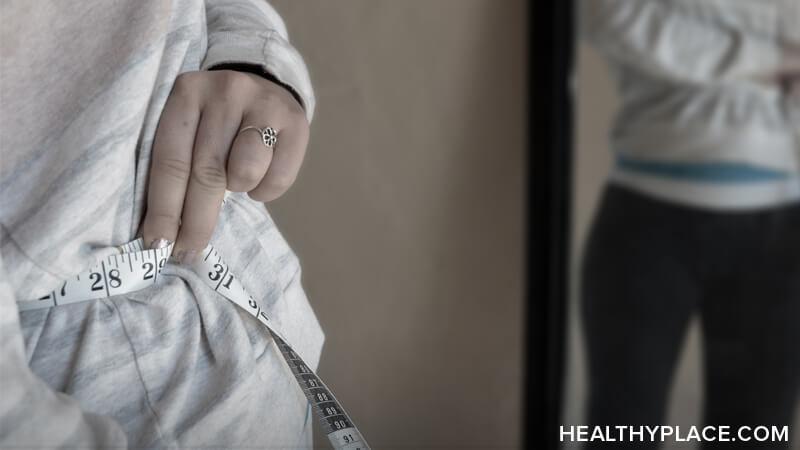Eating Disorders Information For Parents

Detailed overview of the types of eating disorders, signs and symptoms of anorexia, bulimia and binge eating disorder and how to get your child started in eating disorders treatment.
The three common types of eating disorders are anorexia nervosa and bulimia nervosa. They can occur separately or together in the same person. Eating disorders most often affect young women. Less than 10% of people with eating disorders are boys and men. A person who has an eating disorder is not necessarily skinny. Some people with eating disorders are even overweight.
- Most importantly, you should know that eating disorders require medical attention!
What is anorexia nervosa?
To be diagnosed with anorexia, a person must:
- Be 15% below their ideal weight
- Have an intense fear of being fat, even though they are underweight
- Have a distorted image of their body and denial of the problem of their being underweight
- Have amenorrhea (missing at least 3 periods in a row)
- May also binge and purge
It usually affects teens and mostly girls. An estimated 1% of white females have anorexia nervosa. It is more common among people in higher-income groups and in groups that value thinness (like athletes, ballet dancers, and models). It usually starts at age 13-14 or at age17-18.
What is bulimia?
To diagnose bulimia nervosa, a person must:
- Binge eat (eat larger amounts of food in a given period of time than most people would normally eat in similar situation)
- Feel a lack of control during binge eating
- Purge the excess food by making themselves vomit, fasting (not eating for 24 hours), exercising excessively (for more than an hour), or abusing diet pills, laxatives, enemas, or diuretics (water pills)
- Binge and purge regularly over a period of time
- Have a self-image based mostly on their body shape and weight instead of other qualities
People with bulimia may be anywhere from underweight, to normal weight, to overweight. It is estimated that as much as 3% of college-aged women have bulimia.
What is binge eating disorder?
Binge eating disorder is diagnosed when a person:
- Continues to binge eat over time (eating larger amounts of food in a given period of time than most people would normally eat in similar situation)
- Feels a lack of control during binge eating
- Eats fast during binges
- Overeats until uncomfortable
- Eats a lot when not hungry
- Eats alone out of embarrassment
- Feels disgusted with themselves, depressed or very guilty after overeating
- Is worried about their binge eating
Binge eating disorder does not include the purging consistent with anorexia and bulimia. About 40% of obese people may have this problem.
The exact causes of eating disorders are not known for sure. Many different factors working together probably cause a person to develop an eating disorder. Dieting can lead to eating disorders, with the greatest risk to severe dieters. Around two-thirds of new cases of eating disorder are in girls and women who have dieted moderately [1].
Is an eating disorder dangerous to my child's health?
Many dangerous medical and psychological problems can result from eating disorders. Eating disorders can be deadly. They require medical attention!
Is it dangerous to use medications to lose weight?
The products a person might use to lose weight can be very dangerous. The regular use of diuretics (water pills), laxatives, and weight loss pills can cause a variety of life-threatening problems, even if they don't cause very much weight loss. Using syrup of ipecac to cause vomiting can also lead to life-threatening complications.
How can I tell what's a sensible diet?
Generally speaking, most kids and teens should not be on a restrictive diet. In fact, restricting eating to control weight is not only ineffective, but dieting actually promotes weight gain in tweens and teens [2].
How can I tell whether my child is underweight?
If you are concerned about your child's weight, you should take them to see their doctor. There are some different measurements a doctor may take to tell whether your child is underweight.
- Weight and height can be compared and plotted on a growth chart.
- The best measurement to take is body mass index (BMI). It is fairly complicated to calculate and understand. You can calculate your child's BMI on a web BMI calculator, and check your child's BMI against the right chart for their age and sex to find out their percentile. A body mass index (BMI) below the 5th percentile for the child's age and sex is considered underweight.
How can I tell if my child might have an eating disorder?
Look for these behaviors, signs and symptoms:
- Eating tiny portions or refusing to eat
- Intense fear of being fat
- Distorted body image
- Strenuous exercising (for more than an hour)
- Hoarding and hiding food
- Eating in secret
- Disappearing after eating—often to the bathroom
- Large changes in weight, both up and down
- Social withdrawal
- Depression
- Irritability
- Hiding weight loss by wearing bulky clothes
- Little concern over extreme weight loss
- Stomach cramps
- Menstrual irregularities—missing periods
- Dizziness
- Feeling cold all the time
- Sleep problems
- Cuts and calluses across the top of finger joints (from sticking finger down throat to cause vomiting)
- Dry skin
- Puffy face Fine hair on body
- Thinning of hair on head, dry and brittle hair
- Cavities, or discoloration of teeth, from vomiting
- Muscle weakness
- Yellow skin
- Cold, mottled hands and feet or swelling of feet
If your child has some of these signs, you should bring them to the doctor right away. There are some diseases that can appear to be an eating disorder that would need to be ruled out. If the eating disorder is not treated, it can become life-threatening. Take a quiz to see if someone you care about may have disordered eating.
How can I help my child?
- In a calm and caring way, tell your child what you saw or heard. Use "I" statements and let him or her know you are concerned. For example, "I'm worried about you because you haven't eaten lunch this week."
- Listen carefully to what your child says. Teens with eating disorders might feel ashamed or afraid. They may think that life doesn't matter. Feeling out of control is also common.
- What if they get mad or deny it? It is very common for kids with problems to say that there is nothing wrong. Tell them you want to help. You may need to approach them several times.
- Get more tips on how to help your child or family member if you suspect they have an eating disorder.
How are eating disorders treated? How can I get my child started in treatment?
The first goal in treating severe anorexia is to put some weight back on. Then, the goals will focus on learning about nutrition and normal eating patterns, improving self-esteem, relating to others, interacting with family, and treating medical and other psychological problems.
- To get started, call the National Eating Disorders Association's Toll-Free Information and Referral Helpline at 1-800-931-2237.
What can we do to help prevent eating disorders?
You may feel you want to protect your child from the hurt of being teased about their weight. Unfortunately, focusing on your child's body may do more harm than good. Your child may begin to value themselves solely on what they look like and feel they have to look a certain way to gain approval and acceptance.
Try not to put much emphasis on what your child looks like. Instead, emphasize your child's inner qualities. Pay attention to the messages you send your child about appearance and weight. Do you constantly diet, and talk about "good foods" and "bad foods?" Do you make negative comments on your own body in front of your child? It may also help to discourage your daughter from reading lots of women's fashion magazines and from being exposed to other media that portray underweight women as being glamorous. Discuss media images of "ideal bodies" with your children. Teach your kids to be media literate, which will help protect them from harmful messages about food, eating, and body size from TV, music videos, magazines, and ads.
- Parents are key players in prevention—strategies for parents
- Build your child's self-image.
My child seems to have a very distorted view of how they look. What's going on?
Your child may have Body Dysmorphic Disorder (BDD). This means being wrapped up in their appearance way more than normal, and obsessing about real or imagined defects in how they look. It is a kind of distorted thinking. It affects males and females about equally. Find out more about BDD, including list of clues to BDD's presence, and books and articles about the disorder. If you suspect your child has BDD or body image problems, you should seek professional help. The Butler Hospital BDD and Body Image Program recommends getting an evaluation from a psychiatrist or licensed psychologist with expertise in treating BDD. If you can't find anyone with this expertise, then find someone with expertise in treating obsessive-compulsive disorder (OCD), as OCD seems to be related to BDD.
What book should I read to help my child develop healthy eating habits?
How to Get Your Kid to Eat...But Not Too Much, by Ellyn Satter. This is a book all parents should read, whether their children have eating problems or not. It applies to kids from birth through the teen years. The advice in this book can help you help your child to develop a healthy relationship with food.
What are some other resources?
- The National Eating Disorders Association is the largest not-for-profit organization in the United States working to prevent eating disorders, eliminate body dissatisfaction, and provide treatment referrals to those suffering from anorexia, bulimia and binge eating disorder and those concerned with body image, eating and weight issues. Their Web site offers information about eating disorders and body image; referrals to treatment centers, doctors, therapists, and support groups; opportunities to get involved in prevention efforts; prevention programs for all ages; and educational materials. Call 1-206 382-3587 for more information. Call the Toll-Free Information and Referral HelpLine at 1-800-931-2237.
- The National Eating Disorder Information Centre (NEDIC) is a Canadian organization that provides information and resources on eating disorders and weight preoccupation. Phone 416-340-4156.
- The National Association of Anorexia Nervosa and Associated Disorders (ANAD) has an international network of support groups, offers referrals to health care professionals, publishes a newsletter, and will mail information packets customized to individual needs upon request. They work to educate the public, promote research projects, and fight insurance discrimination and dangerous advertising. Their national hotline (847-831-3438) can give you a listing of support groups and referrals in your area.
- Anorexia Nervosa and Related Eating Disorders (ANRED)has merged into NEDA, but maintains its own Web site, which provides lots of information about anorexia nervosa, bulimia nervosa, binge eating disorder, compulsive exercising, and other less well-known food and weight disorders. Their web information includes details about recovery and prevention.
- The Academy of Eating Disorders is an organization for professionals from all fields who deal with eating disorders. Phone 703-556-9222.
- The Nutrition Information Service is part of the University of Alabama-Birmingham, and provides up-to-date, accurate, and useful nutrition, health, and food information to the community and health care professionals. Call their toll-free nutrition hotline with your questions: 1-800-231-DIET (3438). Hours are 8:00 am to 4:00 pm Monday through Friday.
- The Council on Size and Weight Discrimination, Inc. provides information on eating disorders, "sizism," the non-dieting movement, and size discrimination. Phone: (914) 679-1209.
- The National Association to Advance Fat Acceptance provides support and attempts to eliminate discrimination against fat people. Provides information to health professionals on how to treat very large patients (e.g., weighing). Phone: (916) 558-6880.
Sources:
[1] Patton GC, Selzer R, Coffey C, Carlin JB, Wolfe R. Onset of eating disorders: population-based cohort over 3 years. BMJ.1999; 318 :765 -768
[2] Field AE, Austin SB, Taylor CB, Malspeis S, Rosner B, Rockett HR, Gillman MW, and Colditz GA. Relation Between Dieting and Weight Change Among Preadolescents and Adolescents. Pediatrics, Oct 2003; 112: 900-906.
Ed. Note: Article provided by University of Michigan Health System
APA Reference
Staff, H.
(2022, January 27). Eating Disorders Information For Parents, HealthyPlace. Retrieved
on 2026, January 14 from https://www.healthyplace.com/parenting/eating-disorders/eating-disorders-information-for-parents



